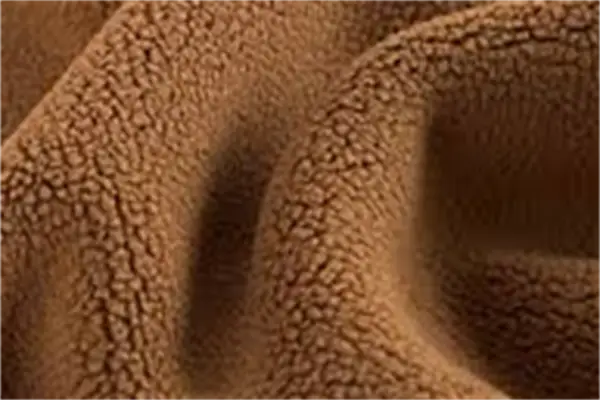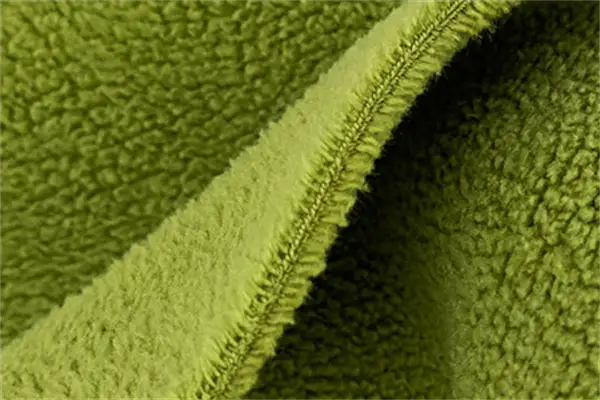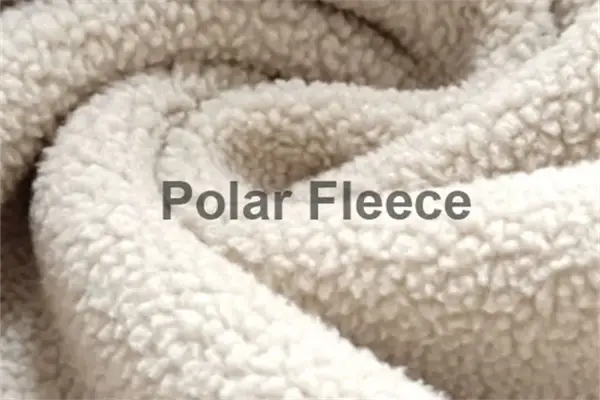Polar fleece has quickly become a go-to fabric for cozy, everyday wear, and its popularity is only continuing to grow in 2025. Whether you’re bundling up in a warm jacket or snuggling under a blanket, polar fleece is the perfect fabric for staying warm without the bulk. It’s soft, lightweight, and incredibly easy to care for—making it a top choice for everything from outdoor adventures to lounging at home.
This fabric’s story began in the late 20th century as a synthetic alternative to wool. Over time, it’s evolved into a durable and sustainable option, with many versions now made from recycled materials. Today, polar fleece is everywhere—whether it’s used in activewear or cozy home textiles.
If you’re curious to learn more about this versatile fabric and how it’s changing fashion, keep reading! For all your polar fleece fabric needs, F&A Fabric has you covered.
What is Polar Fleece Fabric?

Polar fleece fabric is a soft, cozy material made from polyester, perfect for everything from outdoor jackets to blankets. What makes polar fleece stand out is its ability to trap warmth while staying lightweight and breathable.
It’s created by knitting polyester fibers into a smooth, fluffy texture that feels great against the skin. It’s a go-to for people looking for warmth without the weight, making it a popular choice for cold-weather clothing.
As for its environmental impact, it’s worth noting that while polar fleece is made from synthetic polyester, many modern versions are created from recycled plastic bottles, making it a more eco-friendly option. So, if you’re looking for a versatile fabric that’s warm, durable, and kinder to the planet, polar fleece might just be the perfect choice for your next project.
Benefits of Polar Fleece Fabric
This fabric offers several standout benefits that make it unique and high-quality. Here are some of the key advantages of using polar fleece:
Warm, Soft, and Comfortable:
When you wrap yourself in polar fleece, you’ll immediately notice how soft and warm it feels. Unlike other bulky fabrics like wool, it gives you cozy insulation without the weight. Whether you’re making a jacket or a quilt, this fabric feels like a warm hug—keeping you comfy during chilly days or nights.
Breathable and Lightweight:
Polar fleece is perfect for layering. It’s breathable, which means you won’t overheat even when you’re wearing multiple layers. Plus, it’s lightweight, so you’ll feel comfortable all day long. It’s the ideal fabric for outdoor activities or just relaxing at home.
Hydrophobic Properties:
One of polar fleece’s best features is how it repels moisture. It doesn’t absorb water like cotton, so it dries much faster when wet. This is a game-changer for outdoor wear, where rain or sweat can make things uncomfortable. With polar fleece, you’ll stay dry and warm, no matter the weather.
Durability:
Despite its soft feel, polar fleece is incredibly durable. It’s tear-resistant and holds up really well over time. This makes it a great option for anything that will get lots of use—think jackets, blankets, or even pet beds. With proper care, your polar fleece items will last for years.
Quick Drying:
Washing polar fleece is a breeze because it dries super quickly. No more waiting forever for your clothes to dry or worrying about being caught in the rain. Just hang it up, and it’s ready to go in no time. Perfect for everyday wear or when you’re on the go.
Allergen-Friendly:
If you have sensitive skin or allergies, polar fleece is a great option. It’s smooth and soft, making it less likely to irritate your skin. Plus, it doesn’t hold onto allergens as much as some other fabrics, so you can wear it comfortably all day.
Eco-Friendly Options:
Looking for a more eco-conscious choice? Many brands now offer recycled polar fleece made from polyester that’s been repurposed from plastic bottles or old clothing. By choosing recycled fleece, you’re helping reduce waste and make a positive impact on the environment.
Multipurpose:
Polar fleece isn’t just for jackets! It’s perfect for cozy blankets, snuggly scarves, and even quilts to keep you warm through the colder months. Plus, it’s great for crafts, pet beds, or any project where warmth and comfort are key.
7 Types of Polar Fleece Fabric
Polar fleece is a fabric that just keeps on giving! It comes in so many varieties, each with its own unique benefits. Whether you’re planning to make quilts, jackets, or cozy blankets, there’s a polar fleece out there that’s perfect for your project. Here’s a quick rundown of the 7 types of polar fleece you’ll want to know about:
1. Basic Polar Fleece
Basic polar fleece is your classic go-to fabric for just about anything. It’s the most common type, and for good reason—it’s super versatile. From comfy blankets to stylish jackets or scarves, it’s soft, warm, and comes in a rainbow of colors and patterns. This fleece is definitely a staple in any fabric stash!
2. Polar Microfleece
If you’re after something a little lighter, polar microfleece is the way to go. It’s thinner and lighter than regular polar fleece, which makes it perfect for layering. You’ll often find it in indoor garments like cozy pajama pants or lightweight jackets. It’s warm but won’t weigh you down, so it’s great year-round.
3. Anti-Pill Polar Fleece
Nobody likes pilling—that annoying little fuzz that forms on fabric after lots of use. Anti-pill polar fleece takes care of that problem! It stays smooth and looking new, even after many washes. This type of fleece is perfect for items that get a lot of wear, like blankets and outerwear. You’ll love how it keeps its fresh look over time.
4. High Loft Polar Fleece
High loft polar fleece is the thickest and fluffiest of the bunch. If you’re looking for maximum warmth without extra weight, this is the fleece for you. It’s perfect for making jackets and coats that will keep you toasty during the cold months. Plus, it traps heat really well, giving you that cozy, wrapped-up feeling.
5. Recycled Polar Fleece
Want to go green? Recycled polar fleece is made from polyester fibers that come from recycled plastic bottles. It’s a great eco-friendly option for anyone who wants to help reduce waste while still enjoying the softness and warmth of fleece. It’s the perfect choice if you’re into sustainable sewing.
6. Softshell Fleece
Softshell fleece is like the ultimate outdoor fabric. It combines fleece with weather-resistant properties, making it great for outdoor adventures. Whether you’re hiking or braving a light drizzle, this fleece will keep you warm and shield you from the wind and rain. It’s a fantastic choice for active wear.
7. Brushed Polar Fleece
If you’re a fan of extra softness, brushed polar fleece will be your new best friend. This fabric gets brushed to create a plush, fluffy texture that makes it even warmer and cozier. It’s often used in blankets, throws, and anything else you want to wrap up in for extra comfort during chilly weather
Popular Uses of Polar Fleece Fabric
Here are some of the most popular ways to use polar fleece fabric:
Outdoor Gear and Activewear
Heading out for some outdoor fun in the cold? Polar fleece has your back. It’s often used for jackets, hats, and gloves, giving you warmth without the bulk. Whether you’re skiing, hiking, or just braving chilly weather, this fabric keeps you warm and comfy without weighing you down. It’s perfect for all your cold-weather gear.
Home Textiles
Want to add some coziness to your home? Polar fleece is ideal for making soft, warm blankets, throws, and pillow covers. It’s light yet super warm—perfect for those chilly nights when you just want to snuggle up. Plus, it comes in so many colors and patterns, so it’ll easily fit into your home’s vibe.
Pet Products
Don’t forget about your furry friends! Polar fleece is a hit with pets too. From dog blankets to cozy pet jackets, fleece keeps them warm and comfy during colder months. It’s soft on their skin and durable enough to handle all their playtime and cuddles. Plus, you can even find fleece pet beds and other cute accessories.
Sportswear
If you’re into winter sports, polar fleece is a must. It’s perfect for base layers, jackets, and pants designed to keep athletes warm and dry. The fabric is breathable, moisture-wicking, and great for high-energy activities in cold weather, so it’s a go-to for skiing, snowboarding, and anything that gets you moving in the chill.
Automotive Industry
Polar fleece isn’t just for clothing—it has its place in your car too! This fabric is used in car seat covers and liners, adding extra warmth and comfort during those cold winter drives. It’s an affordable, practical way to make your car cozier when the temperatures drop.
Military and Tactical Use
Polar fleece plays a big role in cold-weather gear for military personnel. It’s used in jackets, gloves, and thermal liners that help keep soldiers warm in tough, freezing conditions. With its durability and insulating power, fleece is a reliable fabric for extreme environments.
Fashion & Apparel
Who says polar fleece can’t be stylish? It’s used to make custom jackets, coats, and casual wear that look as good as they feel. You can even personalize it with fun prints and designs. Whether you’re looking for a cozy layer or something casual for a chilly day, fleece keeps you comfy and stylish.

Customization Techniques for Polar Fleece
Embroidery
Embroidery is a fantastic way to add a personalized touch to your fleece items. You can stitch names, monograms, or fun designs on fleece jackets, blankets, or even throw pillows. It gives your fabric texture and an elegant look. Embroidery is perfect for gifts or just making your gear feel more personal. Plus, it’s easy to do at home with the right tools—and the results are always rewarding!
Screen Printing and HTV (Heat Transfer Vinyl)
Looking to transfer detailed designs to fleece? Screen printing and HTV are excellent methods to do just that. Screen printing is great for larger batches, while HTV is perfect for smaller, custom designs. Simply use a heat press to transfer the design onto fleece, and you’ll get vibrant, long-lasting results that hold up well after washing. It’s a wonderful way to make jackets, bags, or even blankets uniquely yours!
Sublimation Printing
Sublimation printing is a great way to add colorful, detailed designs to light-colored fleece. The process involves printing a design onto special paper and using heat to transfer it onto the fleece.
This technique allows for full-color designs that are smooth and vibrant—and they won’t crack or peel over time. If you’re creating custom fleece shirts or home décor, sublimation is an excellent choice for rich, long-lasting designs.
Patchwork and Appliqué
Patchwork and appliqué are perfect ways to get creative with your fleece projects. You can add colorful fabric patches, fun shapes, or decorative stitching to your fleece jackets, blankets, or accessories.
This technique lets you mix different fabrics and textures, creating a one-of-a-kind piece. Whether you’re going for a playful, whimsical look or something a bit more sophisticated, patchwork and appliqué can truly make your fleece items pop.
Polar Fleece vs Other Fleece Fabrics
When it comes to fleece fabrics, the options are endless! Each one has its unique perks, so if you’re working on a quilt, jacket, or a cozy blanket, it’s super helpful to know what sets polar fleece apart from the rest. Let’s break it down to help you choose the best fabric for your next project!
Polar Fleece vs Microfleece
Polar fleece and microfleece both do a great job of keeping you warm, but they’re different when it comes to weight and texture. Polar fleece is thicker and more substantial, making it the go-to for things like jackets or blankets that need extra warmth.
Microfleece, however, is lighter, softer, and perfect for layering or indoor wear. It’s breathable and cozy, so it’s great for pajamas, lightweight jackets, or anything you want to feel comfy without the bulk.
Polar Fleece vs Softshell Fleece
Polar fleece is all about keeping you warm and cozy, while softshell fleece offers more breathability and weather resistance. Softshell fleece has a water-resistant layer, making it great for activities like hiking or skiing where you need to stay warm and protected from the elements. It’s breathable too, which is perfect for outdoor adventures!
Microfleece vs High Loft Fleece
When you compare microfleece and high loft fleece, the texture and thickness are where you’ll really notice the difference. Microfleece is lightweight, smooth, and soft, making it perfect for lighter wear like indoor lounging or light outerwear.
High loft fleece, on the other hand, is much fluffier and thicker, trapping a lot of heat. It’s ideal for those chilly days when you need an extra layer of warmth, like for heavy jackets or coats. If you’re after something light and breathable, microfleece is the way to go, but for a warm and bulky feel, high loft fleece is your best bet.
Polar Fleece Fabric Care Tips

Washing and Cleaning
Use cold or warm water—nothing hotter than 30°C (85°F)—to protect the fabric. Stick with mild detergents that are free of bleach and fabric softeners, which can damage the fibers over time. If you’re washing jackets or anything with zippers, zip them up or turn them inside out. And remember, don’t cram your machine—give your fleece enough space to get properly cleaned.
Drying
Air drying your fleece is always a good option. Simply hang or lay it flat to dry—this helps keep that soft, fluffy feel. If you’re in a pinch, you can toss it in the dryer on a low heat setting, but be careful—high heat can shrink fleece or flatten its texture. If you do use the dryer, take it out while it’s still slightly damp, then finish drying it air-dry style to keep the fibers happy.
Stain Removal
Got a stain on your fleece? Don’t stress! Gently blotting the spot with a clean cloth (no rubbing, that can make it worse). For tougher stains, apply a little mild detergent directly on the spot and let it sit for a few minutes before rinsing. If the stain still doesn’t come out, you can try a stain remover—but always do a patch test first to make sure it won’t affect the fabric. Once treated, just wash and dry as usual.
Conclusion
Polar fleece is a fabric that truly stands out, and it’s easy to see why. With its incredible softness, warmth, and versatility, it’s the go-to choice for everything from jackets and blankets to pet gear and home textiles. And with more eco-friendly options available, it’s no wonder fleece continues to be a top pick in 2025.
Ready to start your next fleece project? Check out Friendtex for top-quality quilting fabrics. Their selection ensures your creations are as cozy, durable, and stylish as can be!
